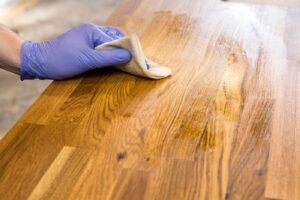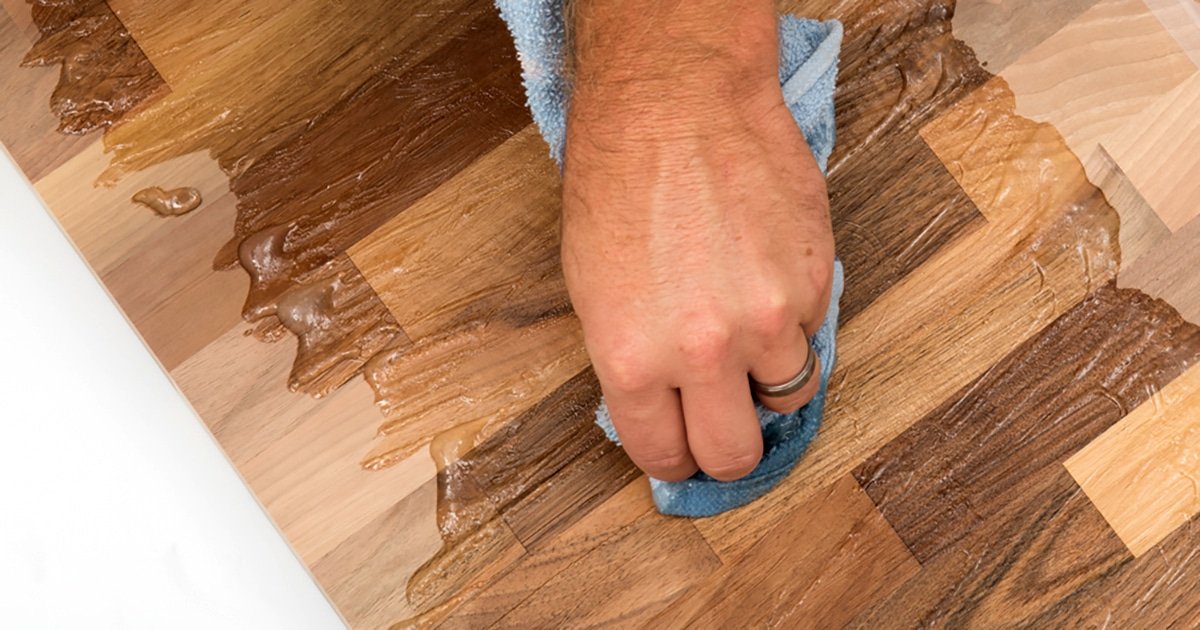Remove Mineral Oil From Wood
We Need to Remove Mineral Oil From Wood Mineral oil is a clear, colorless, and odorless liquid derived from petroleum. It is commonly used in various consumer and industrial products, such as cosmetics, personal care products, lubricants, and wood treatments. It is also used as a laxative.

Remove Mineral Oil From Wood is valued for its non-toxicity, low cost, and versatility as a moisturizer and emollient. It forms a barrier on the skin to lock in moisture and protect against external damage. For example, wood treatments help to protect the wood from water and other environmental elements. However, some people may be sensitive to mineral oil and experience skin irritation or adverse reactions. Additionally, some studies have raised concerns about the environmental impact of petroleum-based products, such as mineral oil. As a result, there is a growing interest in alternative, more sustainable options.
Remove Mineral Oil From Wood is commonly used to treat and protect wood surfaces, but if it has become too heavily built up, you may want to remove it.
Here’s how to Mineral Oil From Wood:
- Clean the surface: Clean the surface with a cloth dampened with warm water and mild soap. This will remove any dirt, grime, or other surface contaminants.
- Use mineral spirits: Apply a small number of mineral shades to a cloth and wipe it onto the surface of the wood. The mineral spirits will help to dissolve the mineral oil.
- Scrub the surface: Use a soft-bristled brush or scrub pad to scrub the surface of the wood gently. This will help to loosen and remove the mineral oil.
- Wipe off the residue: Use a clean cloth to remove any residue from the mineral spirits. Repeat this process as necessary until the surface is clean.
- Sand the surface: If the mineral oil has left a noticeable residue or has discolored the wood, you may need to sand the surface lightly to remove it.
- Re-treat the wood: Once the surface is clean, you can re-treat the wood with a new application of mineral oil or another wood treatment product, if desired.
How Does Removal of Mineral Oil From Wood Works
Mineral oil can be removed from wood using solvents such as paint thinner, mineral spirits, or naphtha. These solvents dissolve the mineral oil, allowing it to be wiped away with a cloth. The wood should then be sanded and cleaned to remove any residual solvent, and the surface should be allowed to dry completely before being sealed or finished. If the mineral oil has penetrated deeply into the wood, it may be necessary to repeat the process several times to remove it altogether.
The steps to remove mineral oil from wood are as follows:
- First, prepare the workspace: Ensure the area is well-ventilated and protected from dust and debris.
- Choose a solvent: Use a solvent such as paint thinner, mineral spirits, or naphtha to dissolve the mineral oil.
- Apply the solvent: Pour a small amount of solvent onto a clean cloth and gently rub it into the wood.
- Wipe away the mineral oil: Use a clean cloth to wipe away the dissolved mineral oil, careful not to spread it further.
- Repeat the process: If the Remove Mineral Oil From Wood has penetrated deeply into the wood, it may be necessary to repeat the operation several times to remove it.
- Sand and clean the wood: After removing the mineral oil, sand the wood to remove any residual solvent or residue. Clean the wood with a damp cloth to remove any dust.
- Let the wood dry completely: Allow it to dry before sealing or finishing it.
Note: It’s essential to follow safety precautions when working with solvents, including wearing gloves and eye protection and avoiding inhalation of fumes.
Benefits Of Removing Mineral Oil From Wood
There are several benefits of removing mineral oil from wood, including:
- Improved appearance: Removing mineral oil can restore the natural beauty and color of the wood, making it look clean and refreshed.
- Better adhesion: If you plan to finish or seal the wood after removing the mineral oil, it’s essential to have a clean surface to ensure proper adhesion.
- Protection: Removing mineral oil from wood can help protect it from further damage or discoloration, primarily if the oil has not been adequately maintained.
- Increased durability: By removing mineral oil, you can prevent it from penetrating too deeply into the wood, which can cause it to become weakened or damaged over time.
- Better staining and finishing results: When removing mineral oil, you remove the protective barrier that it provides, allowing the wood to absorb stain and spend more effectively.
Overall, removing mineral oil from wood can help restore its natural beauty and durability and improve the results of subsequent finishing or sealing.
Disadvantages Of Not Remove Mineral Oil From Wood
Not removing mineral oil from wood can have the following disadvantages:
- Discoloration: Over time, mineral oil can cause wood to yellow or darken, altering its natural color.
- Reduced Longevity: Leaving Remove Mineral Oil From Wood can cause it to deteriorate faster, leading to cracks and other forms of damage.
- Poor Aesthetics: Oil buildup can result in a glossy or sticky surface, making the wood look unappealing.
- Trapping Moisture: Mineral oil can create a barrier that prevents the wood from breathing, trapping moisture and potentially causing it to warp or become moldy.
- Attracting Dust and Dirt: The oily surface can attract dirt, dust, and other particles, making it challenging to keep the wood clean.
- Reduced Flexibility: Mineral oil can cause the wood to become rigid and less flexible, making it more susceptible to cracks and other forms of damage.
Final Thought:
In conclusion, removing mineral oil from wood is essential for maintaining the natural beauty and longevity of the material. By removing the oil, you can prevent discoloration, reduce the risk of damage, and improve the overall appearance and feel of the wood. Additionally, eliminating mineral oil allows the wood to breathe, reducing the risk of trapped moisture and mold growth. Overall, taking the time to clean and maintain wood surfaces properly can help to preserve the material for years to come.







